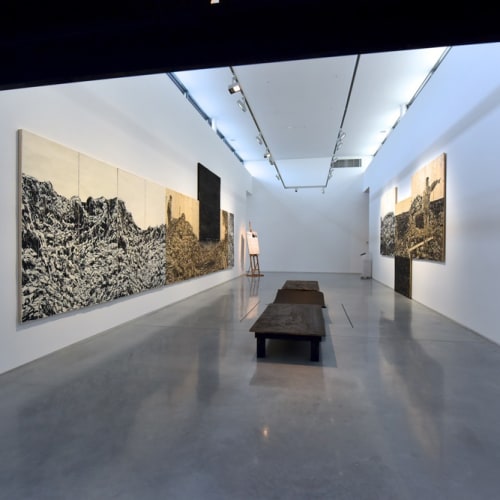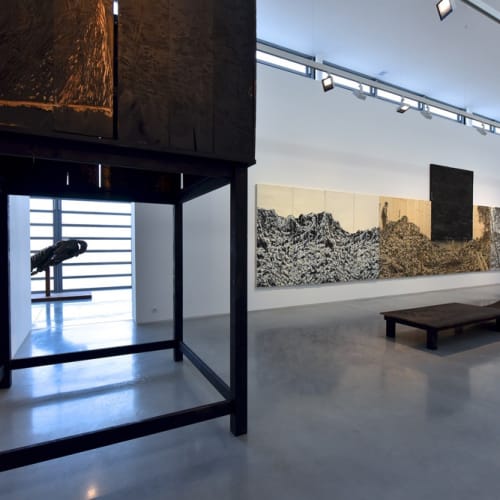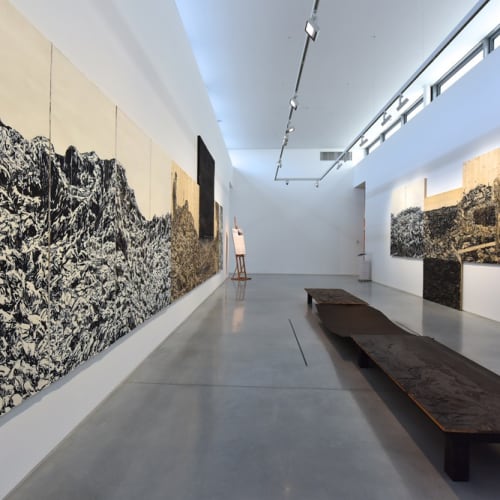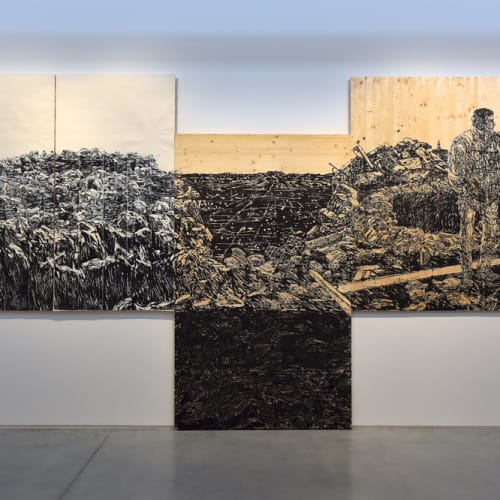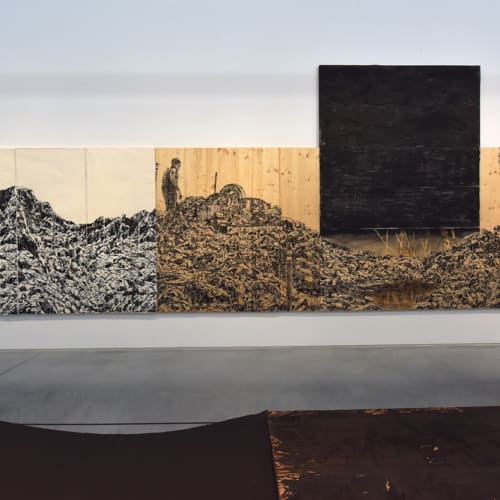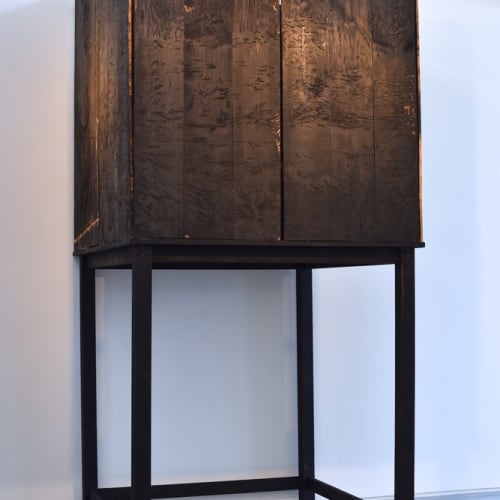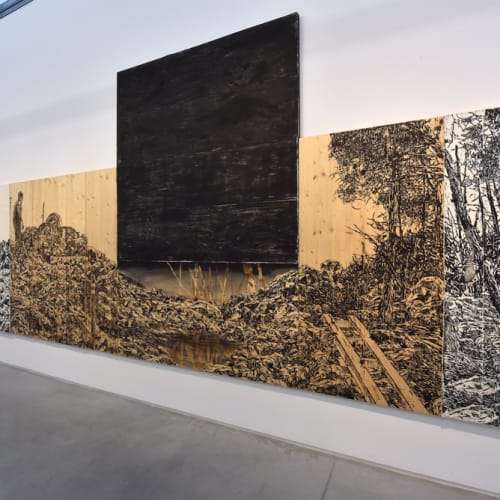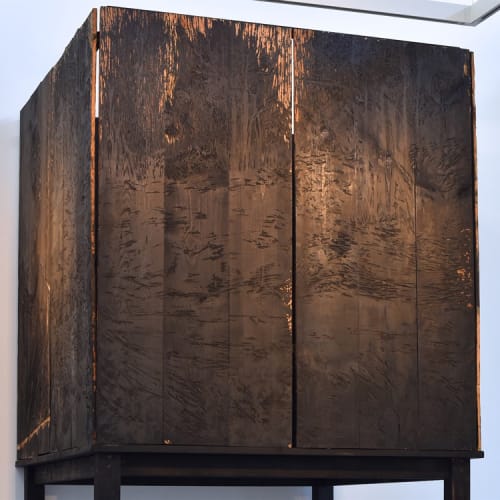An exhibition of Orit Hofshi's monumental prints entitled Crossing will be on display at the Danubiana Mulensteen Art Museum in Bratislava, Slovakia March 24-May 28, 2017.
From the Danubiana:
Philosopher Immanuel Kant discusses the issue of distance when defining the concept of "the sublime." According to Kant, the sublime is the infinite distance from the ideal of harmony between the laws of nature and the laws of man. Confrontation with superior forces that threaten to swallow the individual is the basis of the sublime. In Romanticism, the experience of the sublime was described as emerging in response to nature and its mysterious powers, which threaten the wholeness and independence of the subject. The status of "the sublime" has been undermined by the conquest and commercialization of nature in the modern age, and by its incorporation in global consumerism in the postmodern age. These developments have undermined the dialectics of an autonomous subject facing a transcendental "other."
Hofshi is constantly pre occupied with the human condition, researching historical and current contexts and perspectives, questioning humans' place and significance as part of their socio political fabric and in the broader planetary scheme. The current exhibition, "Crossing", continues her examination of chronology, being and evident traces. She is captivated and agitated by the intertwined evolution of humans in the environment, the existence of communities both in the physical sense as well as broader social and political sense. Hofshi is preoccupied with the brief yet subjectively perceived total existence of the individual, as part of turbulent social circumstances.
Both "Crossing" and "Chronicle" hung on opposing walls are monumental works depicting distant, neo-romantic landscapes. A tall structure positioned at the far side of the space, and a narrow wooden deck or perhaps pathway, in the center of the space, complete the installation.
In the works, the forces of nature and of destruction mingle and mix. The powers of "the sublime" encounter both natural and human catastrophes. Realism and expressionism merge, creating a landscape that is threatening and disquieting rather than pastoral. In the words of the artist, "I aspire to position humankind in a manner that would enhance self-observation, in the context of broader surroundings and the environment. It takes a good measure of humbleness to fully comprehend ones state, position and role, in light of corresponding relationships with others and the world around us."
Hofshi maintains an ongoing dialogue between the figures in her works and the place where they are depicted. These figures look contemporary, but at the same time seem somewhat alienated to the surrounding landscape. Their disposition conveys a sense of expectation, accentuated by a sense of aimless presence.
The physical size of the works amplifies their expressivity, figures placed in the landscape, with evidence of human activity but no tangible recognizable characteristics. They seem to have covered quite some ground in their journey, but their goals or raison d'etre remain just as unclear. The works' totality engulfs the viewer prompting him to proffer personal interpretations. Works include paper and carved wood panels, as well as wood blocks used in the printing process, displayed here as works in their own right.
Her haunting vistas of ruins and rugged landscapes respond to both the sublime forces of nature and the consequences of war as well as time itself. Through her art, she seeks commonalities of experience that transcend nationalism and sectarianism. Juxtapositions of ruined walls and new foundations stand as universal symbols of loss, absence, and the uphill struggle to find one's place in a fractured world, emphasizing archetypal aspects of the human condition. Addressing the prevalence of violence and dislocation, Hofshi asserts the need for reflection, persistence, and understanding.

